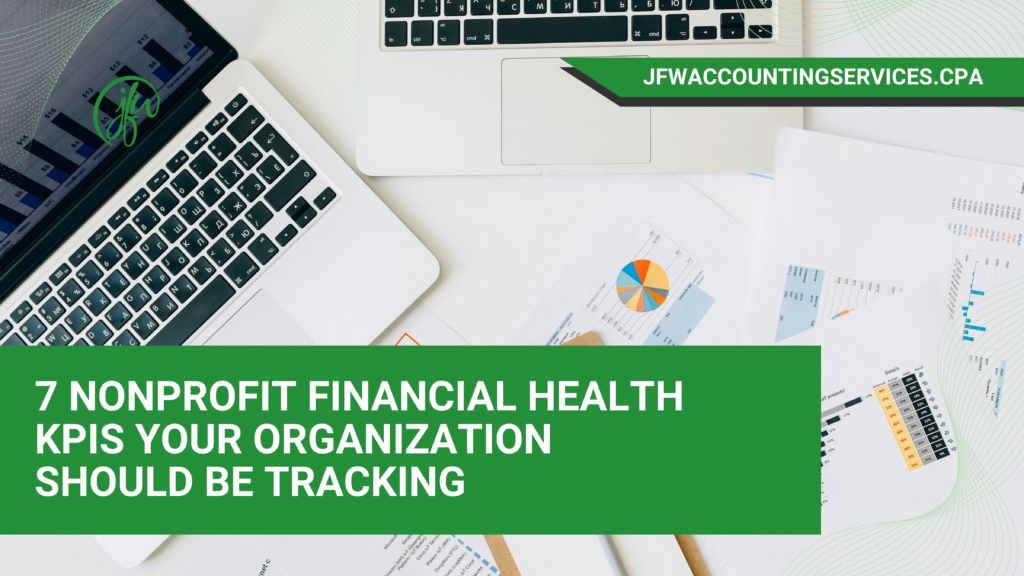Financial stability and strong nonprofit financial health mean ensuring your mission can thrive for years to come. Your organization exists for purposes beyond finances, yet tracking specific financial health metrics remains essential for sustainability and impact.
This guide explores seven critical financial Key Performance Indicators (KPIs) that every nonprofit should monitor to maintain fiscal health and demonstrate accountability to stakeholders.
- Liquidity Ratio
- Program Expense Ratio
- Revenue Growth Rate
- Revenue Reliability
- Expense-to-Revenue Ratio (ERR)
- Unrestricted Net Assets Ratio
- Liabilities as Percentage of Total Assets
1. Liquidity Ratio
Liquidity measures your organization’s ability to meet short-term obligations and respond to new opportunities. This critical measure shows your financial ability to withstand risks and respond to new opportunities.
How to calculate: Cash on hand divided by average monthly expenses.
Target benchmark: Aim for 3-6 months of operating expenses in reserve. Recent studies indicate that approximately 60 percent of organizations have less than three months of cash in reserve, but as a general rule, organizations should strive to have, at a minimum, three to six months of unrestricted cash on hand.
Why it matters: Sufficient liquidity allows your nonprofit to weather funding gaps, unexpected expenses, or economic downturns without compromising programs.
2. Program Expense Ratio
This ratio reveals how much of your spending directly supports your mission versus administrative costs.
How to calculate: Program expenses divided by total expenses.
Target benchmark: According to Charity Navigator, seven out of 10 nonprofits listed on their site spend at least 75 percent of their expenses directly on their programs.
Why it matters: This metric demonstrates to donors and stakeholders that your organization efficiently directs resources toward mission-related activities. It’s one of the most scrutinized metrics by charity watchdogs and potential donors.
3. Revenue Growth Rate
The revenue growth rate is the percentage increase or decrease in revenue over a specified period. This essential KPI is one of the most important financial metrics your organization can use to track growth and financial sustainability.
How to calculate: [(Current year revenue – Previous year revenue) / Previous year revenue] × 100
Why it matters: Tracking growth trends helps you understand if your funding model is sustainable and expanding. A consistently negative growth rate may signal the need for diversification or new funding strategies.
4. Revenue Reliability
Reliable, recurring revenue is the backbone of nonprofit stability.
How to calculate: Track the percentage of your revenue that comes from consistent, predictable sources year after year.
Why it matters: Nonprofits should avoid balancing budgets with nonrecurring revenues, one-time grants or contributions and other uncertain revenue sources. Understanding which income streams you can count on helps create realistic budgets and sustainable plans.
5. Expense-to-Revenue Ratio (ERR)
This ratio measures the relationship between what you spend and what you earn.
How to calculate: ERR = Operating Expenses / Total Revenue × 100
Example: If your nonprofit has $8,000 in operating expenses and $10,000 in total revenue, your ERR would be 80%.
Why it matters: An ERR consistently above 100% indicates you’re spending more than you’re bringing in—an unsustainable pattern. Ideally, your ERR should allow for some margin to build reserves.
6. Unrestricted Net Assets Ratio
This metric reveals your organization’s financial flexibility.
How to calculate: Unrestricted Net Assets = Total Net Assets – Restricted Net Assets
Why it matters: A healthy portion of unrestricted assets gives your nonprofit the freedom to address emerging needs, invest in growth opportunities, or navigate challenging times without being constrained by donor restrictions.
7. Liabilities as Percentage of Total Assets
This ratio helps you monitor your debt level and overall financial risk.
How to calculate: Total Liabilities / Total Assets × 100
Target benchmark: As a rule of thumb, organizations should strive to keep this ratio below 50 percent.
Why it matters: Excessive debt can limit your organization’s flexibility and divert resources from your mission to debt service. Tracking this ratio helps ensure you maintain a sustainable balance between assets and obligations.
Putting KPIs to Work
Tracking these nonprofit financial health metrics consistently over time provides valuable insights into your organization’s financial trajectory. Here’s how to maximize their value:
- Set up a regular reporting schedule — Monthly or quarterly review of these metrics helps identify trends early.
- Use visual dashboards — Convert raw data into easy-to-understand visualizations for board and staff meetings.
- Compare to benchmarks — Look at industry standards and your organization’s historical performance to provide context.
- Make data-driven decisions — Use these metrics to inform strategic planning, budgeting, and fundraising efforts.
- Be transparent — Share appropriate financial metrics with stakeholders to build trust and demonstrate accountability.
A Balanced Approach to Nonprofit Financial Management
While these KPIs provide critical insights, remember that numbers tell only part of the story. The most effective financial management balances quantitative metrics with qualitative factors like mission impact, community needs, and strategic priorities.
By regularly monitoring these eight financial health indicators, your nonprofit can build a foundation for sustainability that supports your mission for years to come.
Ready to Strengthen Your Nonprofit’s Financial Health?
If you need tailored advice or assistance implementing best practices, contact JFW Accounting Services for professional guidance. Coupled with the right technology—like Sage Intacct—and a commitment to ongoing staff education, your nonprofit will stay compliant, efficient, and ready to achieve its mission.
Contact JFW Accounting Services today to learn how we can help your nonprofit thrive financially while maximizing your mission impact.

Jo-Anne Williams Barnes, is a Certified Public Accountant (CPA) and Chartered Global Management Accountant (CGMA) holding a Master’s of Science in Accounting (MSA) and a Master’s in Business Administration (MBA). Additionally, she holds a Bachelor of Science (BS) in Accounting from the University of Baltimore and is a seasoned accounting professional with several years of experience in the field of managing financial records for non-profits, small, medium, and large businesses. Jo-Anne is a certified Sage Intacct Accounting and Implementation Specialist, a certified QuickBooks ProAdvisor, an AICPA Not-for-Profit Certificate II holder, and Standard for Excellence Licensed Consultant. Additionally, Jo-Anne is a member of American Institute of Certified Public Accountant (AICPA), Maryland Association of Certified Public Accountants (MACPA), and Greater Washington Society of Certified Public Accountants (GWSCPA) where she continues to keep abreast on the latest industry trends and changes.

